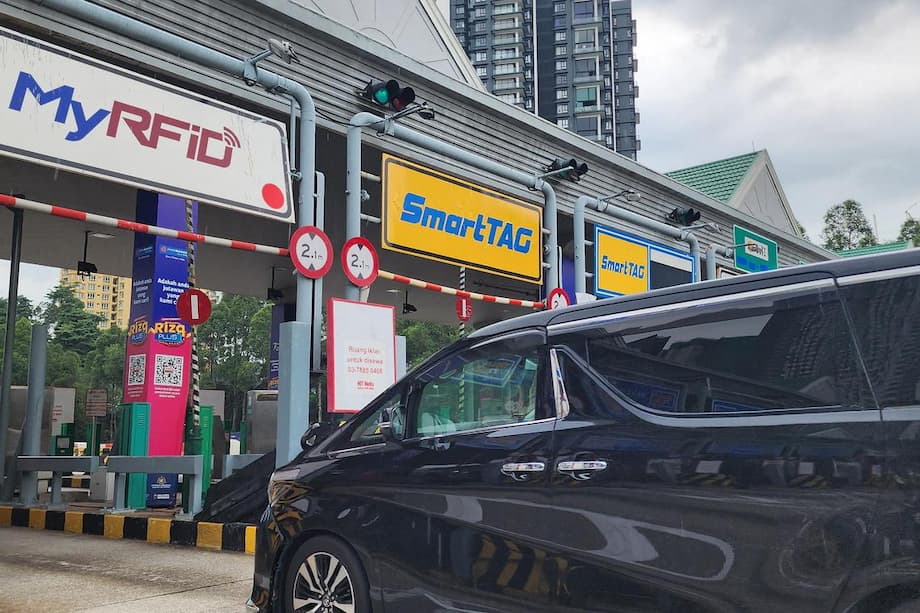Malaysia’s Push for Barrierless Tolling: A New Era for Highway Travel
Malaysia is on the cusp of a major transformation in its highway toll collection system. Inspired by Singapore’s Electronic Road Pricing (ERP) and similar systems in countries like Australia and Taiwan, Malaysia is preparing to trial a barrierless, multi-lane free flow (MLFF) toll system powered by Automatic Number Plate Recognition (ANPR) and Radio Frequency Identification (RFID) technologies. The goal: to eliminate toll booth bottlenecks, reduce congestion, and modernize the nation’s highways for millions of daily users.
- Malaysia’s Push for Barrierless Tolling: A New Era for Highway Travel
- What Is a Barrierless Toll System and Why Is Malaysia Adopting It?
- How Will the PLUS Pilot Work?
- Business Model and Government Involvement
- Challenges and Roadblocks: Why Hasn’t This Happened Sooner?
- How Will the New System Affect Drivers?
- Learning from Singapore and Other Countries
- What’s Next? Timeline and Future Prospects
- In Summary
This initiative, led by the country’s largest highway operator PLUS Malaysia, is set to begin public trials in mid-August 2025 on the North-South Expressway. If successful, it could pave the way for a nationwide rollout by 2027, fundamentally changing how Malaysians and cross-border travelers pay for road use.
What Is a Barrierless Toll System and Why Is Malaysia Adopting It?
Traditional toll plazas require vehicles to slow down or stop to pay, causing long queues and traffic jams, especially during peak hours and holidays. Barrierless tolling, or MLFF, removes these physical barriers. Instead, vehicles are charged electronically as they pass under gantries at normal speeds, without the need to stop, tap a card, or even slow down.
Malaysia’s MLFF system will rely on two main technologies:
- Automatic Number Plate Recognition (ANPR): High-resolution cameras capture vehicle license plates in real time, matching them against a central database to identify the vehicle and its registered owner.
- Radio Frequency Identification (RFID): Electronic tags installed on vehicles communicate with sensors on gantries, enabling seamless toll payments.
This approach is modeled after Singapore’s ERP, which has successfully managed congestion and streamlined toll payments for decades. The Malaysian government and highway operators believe that adopting MLFF will:
- Significantly reduce congestion at toll plazas
- Improve travel times and the overall driving experience
- Modernize toll collection and enforcement
- Enable more flexible payment options
How Will the PLUS Pilot Work?
The first major public trial will take place on the North-South Expressway, Malaysia’s busiest highway, operated by PLUS Malaysia. The pilot will involve thousands of selected participants and cover nine toll plazas between Hutan Kampung and Sungai Dua in northern Penang.
Participants will be required to:
- Download a dedicated mobile app
- Register their vehicle’s number plate
- Link a payment method (credit card, debit card, or e-wallet)
As vehicles pass through the toll area, ANPR cameras will scan their plates. The system will automatically deduct the toll from the linked payment method, and the app will provide users with travel history, receipts, and enforcement notices. Initially, vehicles will still pass through existing barriers, but these could be removed in later phases as the system matures and proves reliable.
Why ANPR and Not Just RFID?
While RFID has been rolled out on many Malaysian highways, it still requires vehicles to slow down to around 30 km/h for detection. ANPR, on the other hand, can process vehicles at full speed and is reportedly up to four times faster than RFID. By combining both technologies, the system aims to maximize accuracy and minimize disruptions.
Business Model and Government Involvement
One of the unique aspects of Malaysia’s MLFF rollout is its business-to-business (B2B) model. Instead of the government directly funding or operating the system, private service providers will negotiate with the 33 existing highway concessionaires to implement MLFF solutions. This approach is designed to:
- Encourage innovation and competition among technology providers
- Ensure no direct financial burden on the government
- Respect existing concession agreements with highway operators
Deputy Works Minister Datuk Seri Ahmad Maslan emphasized in Parliament that the MLFF system “will not impose any financial burden on the government.” Instead, concessionaires are given two years to finalize their technology partners and business arrangements for MLFF implementation.
Challenges and Roadblocks: Why Hasn’t This Happened Sooner?
Despite the clear benefits, Malaysia’s journey toward barrierless tolling has faced significant hurdles:
- Resistance from Concessionaires: Some highway operators have been wary of ceding toll collection to third-party technology providers, fearing loss of revenue control and complications with bondholders and existing contracts.
- Regulatory Delays: The lack of a clear legal framework for enforcement and payment collection has slowed progress. For example, if a driver fails to register or link a payment method, it’s unclear how tolls will be collected or penalties enforced.
- Technical Challenges: Malaysia’s vehicle number plates are not always standardized, making ANPR less reliable. The Road Transport Department (JPJ) is studying new technologies, such as RFID-embedded plates, to address this issue.
- Payment System Fragmentation: Currently, most tolls are paid via Touch ‘n Go, but the government aims to open the system to any digital payment provider for greater flexibility and user choice.
Past attempts to implement a national MLFF system stalled due to these issues. In the absence of a unified approach, major operators like PLUS have taken the lead in piloting their own solutions.
Expert and Industry Perspectives
Industry analysts and transportation experts widely support the move to MLFF, citing its potential to dramatically reduce congestion and improve efficiency. However, they caution that success depends on robust enforcement mechanisms and regulatory clarity.
Transport analyst Dr. Ahmad Fauzi noted, “Without strong enforcement, there’s a risk that some motorists will evade payment. Countries like Australia and Singapore have strict penalties, including fines and blocking vehicle registration renewals for unpaid tolls. Malaysia will need similar measures.”
Indeed, the Works Ministry has suggested that enforcement could include blocking road tax renewals for vehicles with outstanding tolls, but this would require new legislation and coordination with the Road Transport Department.
How Will the New System Affect Drivers?
For the average Malaysian motorist, the shift to MLFF and ANPR-based tolling promises several tangible benefits:
- Faster Journeys: No more stopping or slowing down at toll plazas, even during peak hours or festive seasons.
- Flexible Payments: The ability to pay tolls via a range of digital methods, not just Touch ‘n Go cards.
- Seamless Cross-Border Travel: Reduced delays at border checkpoints, benefiting both Malaysians and Singaporeans who frequently travel between the two countries.
- Integrated App Experience: Access to travel history, receipts, and enforcement notices in one place.
However, drivers will need to ensure their vehicles are registered in the system and that payment methods are up to date. Non-compliance could result in fines or difficulties renewing road tax in the future.
What About Privacy and Security?
As with any system that collects and processes personal data, privacy and security are major concerns. The authorities and technology providers have pledged to implement robust data protection measures, including encryption and strict access controls. The system will also be subject to oversight by relevant government agencies to prevent misuse or unauthorized access to vehicle and payment data.
Learning from Singapore and Other Countries
Singapore’s ERP system, launched in 1998, is often cited as a model for electronic tolling. It uses a combination of in-vehicle units and gantry-mounted sensors to charge motorists based on road usage and congestion levels. The system has been credited with reducing traffic jams and encouraging more efficient use of road space.
Other countries, such as Australia and Taiwan, have also adopted MLFF systems with varying degrees of success. Key lessons from these experiences include:
- Enforcing standardized number plates for reliable ANPR
- Providing multiple payment options to maximize user adoption
- Implementing strong legal frameworks for enforcement
- Ensuring public education and clear communication during the transition
Malaysia’s approach incorporates many of these best practices, but the real test will come during the public trials and subsequent nationwide rollout.
What’s Next? Timeline and Future Prospects
The PLUS pilot is scheduled to begin in mid-August 2025, with thousands of participants testing the ANPR-based system at nine toll plazas in Penang. If the trial proves successful, the government and highway operators aim to expand MLFF to other highways, with a target of full nationwide implementation by 2027.
In the meantime, other pilot projects are underway, such as the installation of MLFF gantries on the Kemuning–Shah Alam Expressway. The government has given concessionaires two years to finalize their technology partners and business models, after which MLFF is expected to become the standard for toll collection across Malaysia’s 33 tolled highways.
While challenges remain—especially around enforcement, payment integration, and technical reliability—the momentum is clearly building. If Malaysia can overcome these hurdles, it will join a select group of countries with truly modern, efficient, and user-friendly highway tolling systems.
In Summary
- Malaysia is piloting a barrierless, multi-lane free flow (MLFF) toll system using ANPR and RFID technologies, inspired by Singapore’s ERP.
- The first major public trial will begin in mid-August 2025 on the North-South Expressway, involving thousands of participants and nine toll plazas in Penang.
- The new system aims to eliminate toll booth bottlenecks, reduce congestion, and modernize toll payments with flexible digital options.
- Implementation faces challenges, including regulatory hurdles, concessionaire resistance, technical issues with number plate standardization, and enforcement mechanisms.
- If successful, MLFF could be rolled out nationwide by 2027, transforming the driving experience for millions of Malaysians and cross-border travelers.
- Strong legal frameworks, public education, and robust data protection will be essential for the system’s success.












